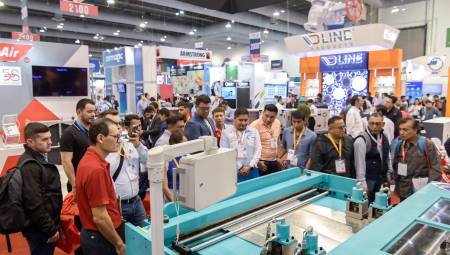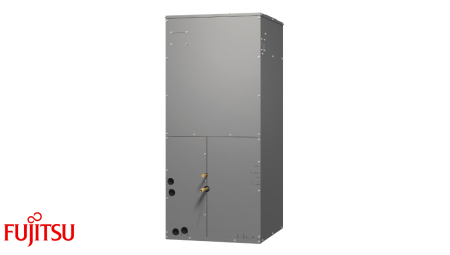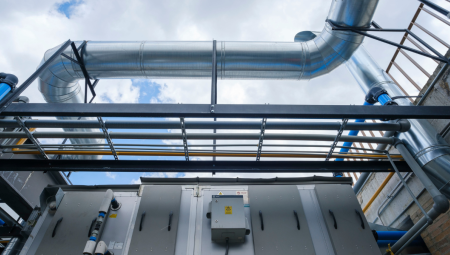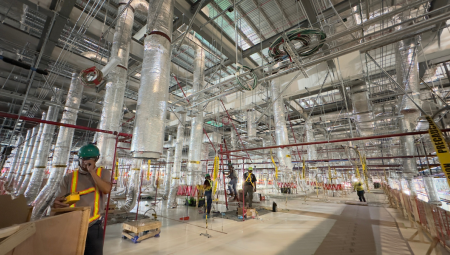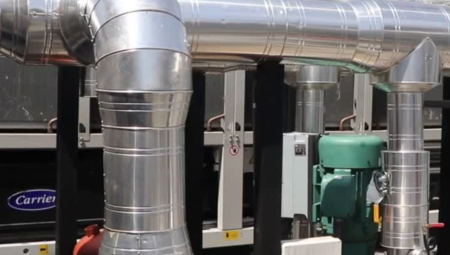The most ecological alternative when it comes to air conditioning a building is the use of renewable energy sources or the use of surplus energy from other processes.
For this type of application , absorption machines are used. These machines differ from conventional steam compression air conditioning machines in that the external source of energy necessary for their operation is of thermal and not electrical origin.In particular, an excellent source of energy is solar thermal energy, in many facilities it is used only for the generation of domestic hot water, presenting significant surpluses that in many cases dissipate directly to the outdoor environment, especially in the summer months in which the demand for cooling is higher.


Among the different types of absorption machine are:
We will first explain the mode of operation of the simple effect machines from each of the elements that constitute it and that are shown in the following diagram:

Generator: contains a solution of ammonia dissolved in water at high pressure (about 20 bar). Due to the effect of the external thermal energy provided to the system, the dissolved ammonia is vaporized, separating from the water. This generated steam is directed towards the condenser.
Condenser: in this exchanger the ammonia condenses by giving heat to another fluid, which can be water or air. Expansion valve: ammonia in the liquid state at high pressure expands by sharply lowering its pressure, so that it passes to a biphasic state (liquid + steam). Evaporator: the ammonia evaporates absorbing energy from the circuit of use, usually water that feeds a set of fan coil that are responsible for air conditioning the different rooms. Absorber: the steam at low pressure passes to it dissolving again in the water coming from the generator. Pump: the mixture is responsible for circulating the ammonia dissolved in water to the generator. These machines have a COP between 0.6 and 0.8.These machines require a thermal fluid at a temperature between 70-90 ºC. In case of using solar thermal energy, vacuum collectors are suitable.
DOUBLE EFFECT MACHINES
As for the double effect machines, their operation is similar with the exception that the cooling fluid in this case is water and the absorbent is a salt (lithium bromide).
It features the same elements as a simple effect machine by adding a low-temperature generator.
The generation of cooling fluid (water) and the regeneration of the absorbent is carried out in 2 different stages, hence the denomination of double effect.
The following diagram illustrates how it works:

The concentrated LiBr solution is sucked from the absorber and transported to the low-temperature generator. Once there it boils thanks to the heat transferred by the coolant (water vapor) produced by the high temperature generator, releasing water vapor and producing an even more concentrated LiBr solution, part of which is sucked by a pump and transported to the high temperature generator and the other part returns back to the absorber passing before through a low temperature recuperator where it is cooled.
In the high temperature generator this concentrated solution boils by the effect of the external heat source, generating refrigerant at high temperature. As we have indicated before, this high-temperature steam loses heat in the low-temperature generator, producing a partial condensation of it. Therefore the low temperature generator also acts as a condenser.
The steam generated in the low temperature generator flows into the condenser where it gives latent heat to the cooling water circuit changing state (from vapor to liquid).
The refrigerant produced in the two generators, already in a liquid state, is sprayed by sprays on a tube exchanger, inside which circulates water that is cooled in this process. The sprayed water evaporates in this heat exchange, passing back to the absorber where it meets part of the saturated solution from the generators being absorbed by it.
This somewhat complex process manages to increase the COP of the machine up to 1 - 1.2.
These machines require a thermal fluid at a temperature above 150 ºC. In case of using solar thermal energy, the use of adjustable parabolic collectors is required.
This technology offers an excellent opportunity for ecological air conditioning taking advantage of the solar energy that we have so accessible in mediterranean countries.
Authors: Energy Efficiency Solutions







